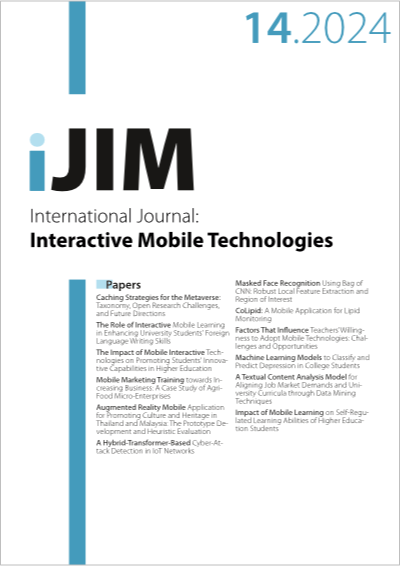A Textual Content Analysis Model for Aligning Job Market Demands and University Curricula through Data Mining Techniques
DOI:
https://doi.org/10.3991/ijim.v18i14.47901Keywords:
Machine Learning, Web Crawling, Data Mining, Job Vacancy, University CurriculaAbstract
Addressing the growing disparity between job market demands and the availability of skilled workers, particularly in the technology sector, is a critical challenge in numerous countries. This study introduces a model that assesses the alignment between job market requirements and university curricula, primarily through textual content analysis. Initially, this research illustrates the operational framework of the model through graphical representation. Subsequently, the proposed techniques vital to the functionality of this model are delineated. Specifically, the integration of data mining techniques is employed for the automated extraction of relevant information from both labor market demands and university curricula. An integral aspect of this study involves outlining the methodology for creating the dataset. This phase is essential as it lays the groundwork for further stages, notably the implementation of code to generate comprehensive results. The findings of this study reveal significant insights into the alignment between job market demands and university curricula. Through textual content analysis and data mining techniques, patterns and discrepancies between the two domains are identified, shedding light on areas for improvement in educational provision. Conclusions drawn from this research underscore the importance of bridging the gap between workforce requirements and educational provisions. By leveraging data-driven approaches, educators and policymakers can make informed decisions to enhance curriculum development and better prepare students for the demands of the job market. The impact of this research extends to both academia and industry, offering actionable insights for curriculum alignment and workforce readiness initiatives. Ultimately, this model contributes to the advancement of educational practices and the enhancement of workforce productivity in response to evolving industry needs.
Downloads
Published
How to Cite
Issue
Section
License
Copyright (c) 2024 Dr. Ylber A. Januzaj, Driton Sylqa, Artan Luma, Luan Gashi

This work is licensed under a Creative Commons Attribution 4.0 International License.



